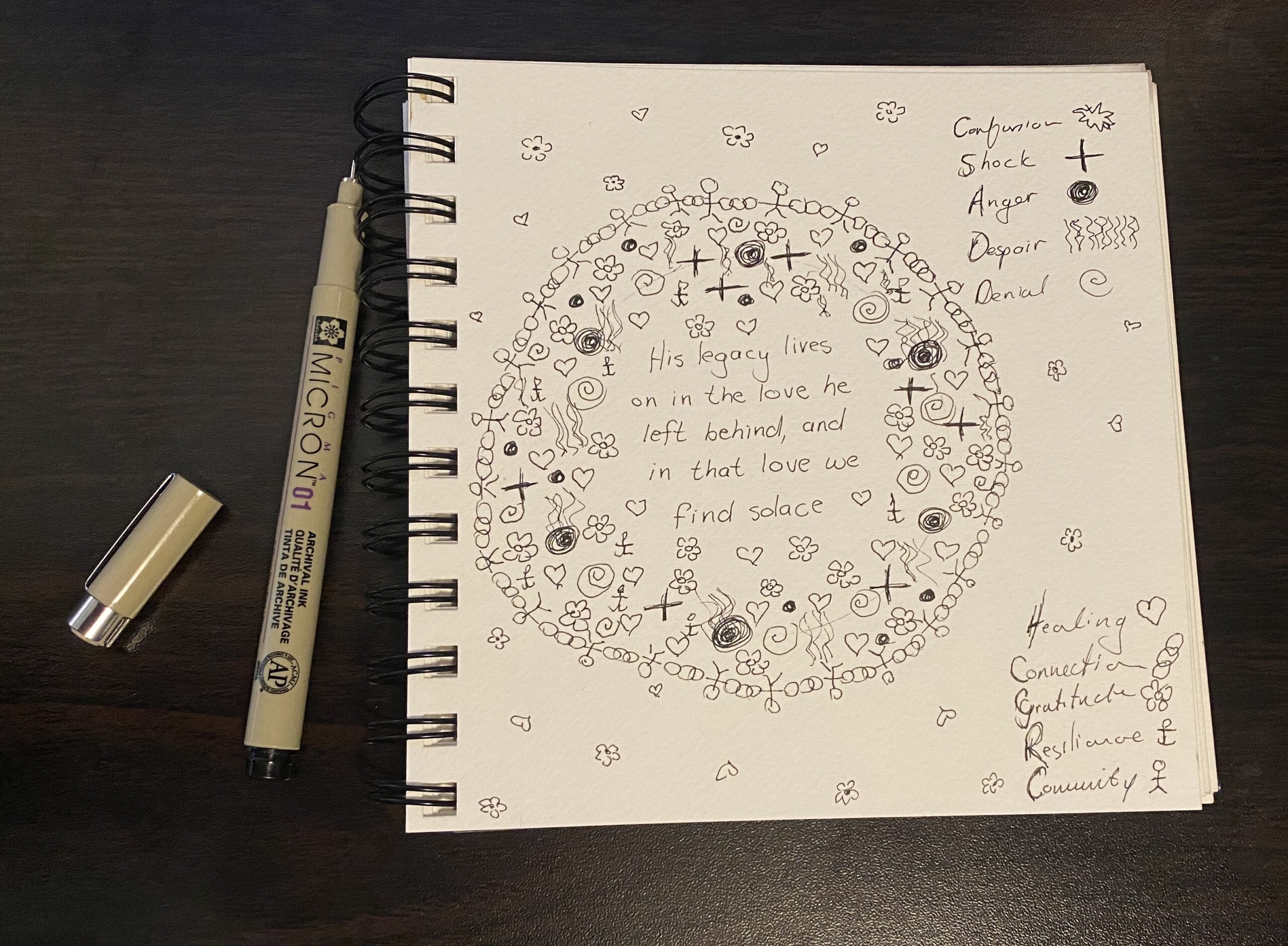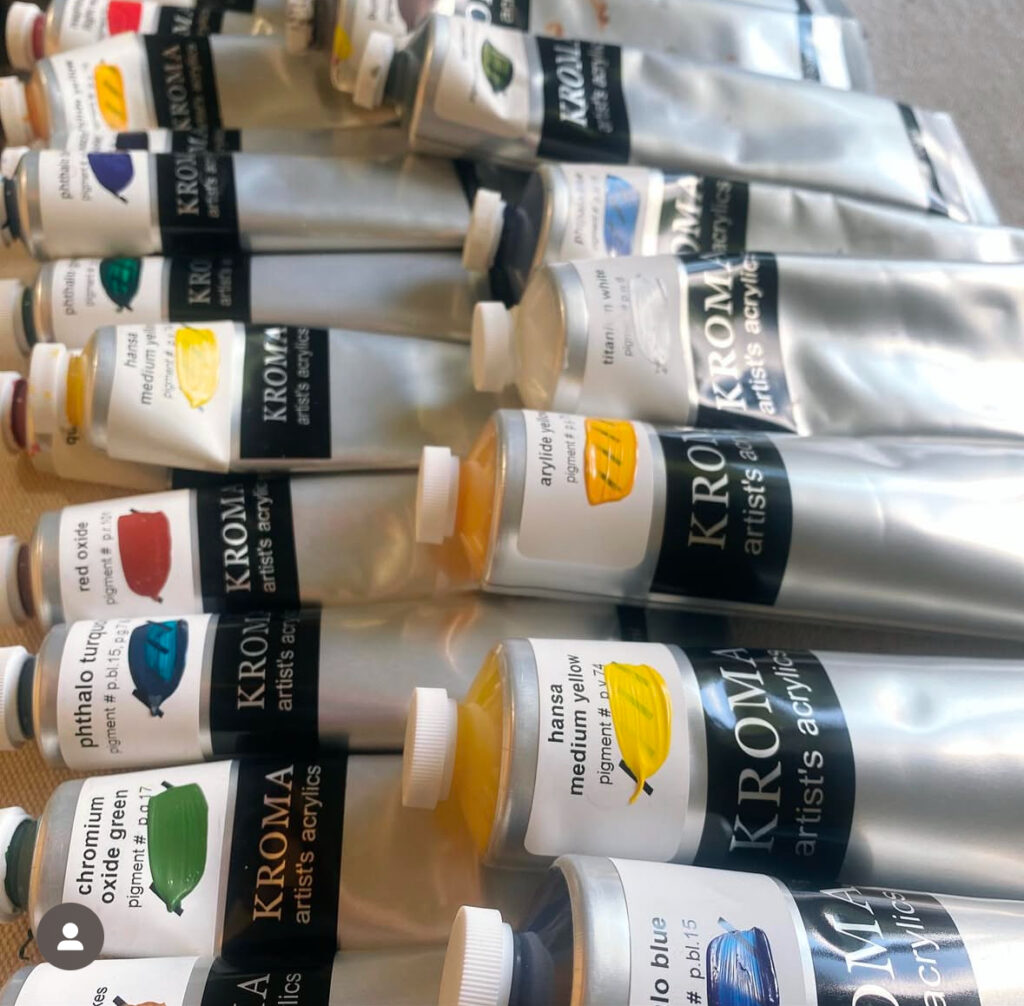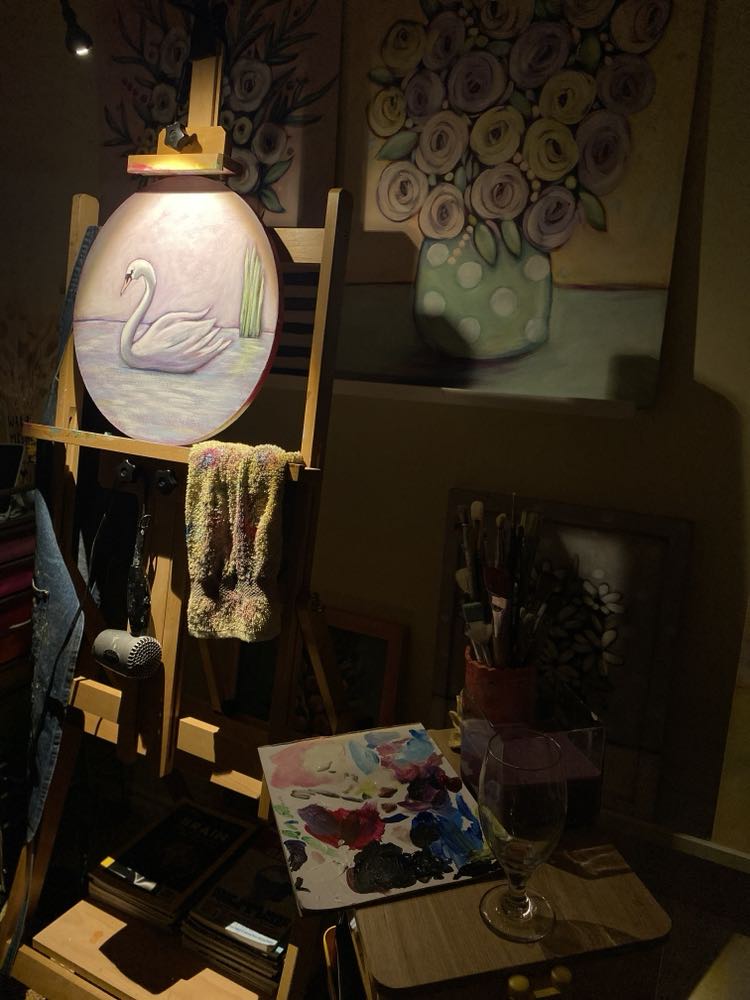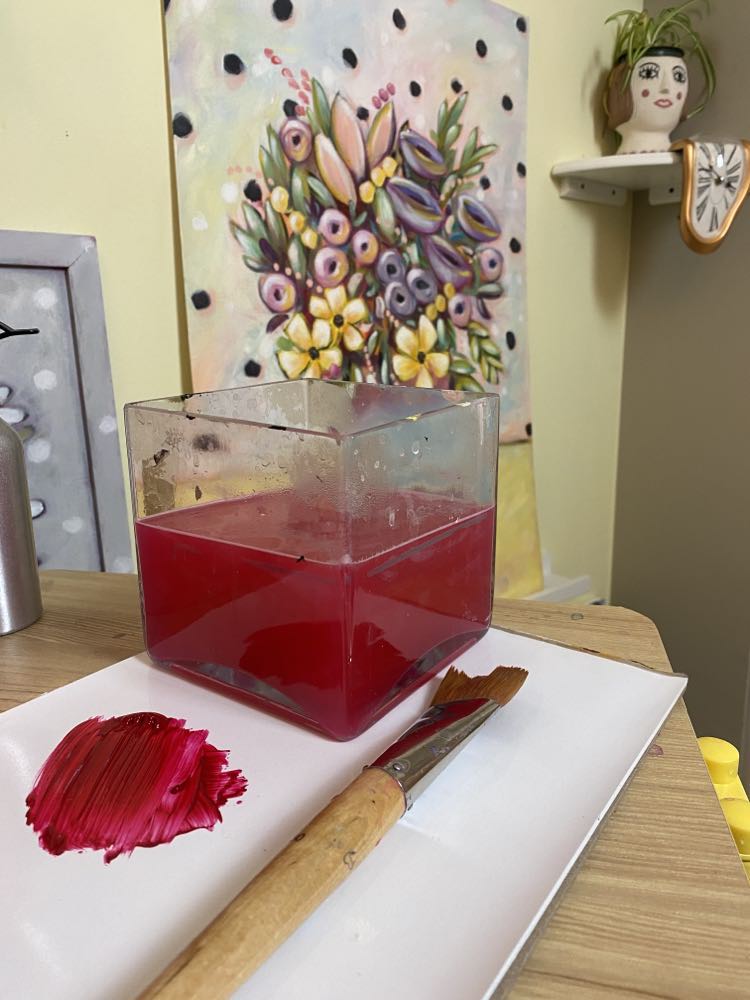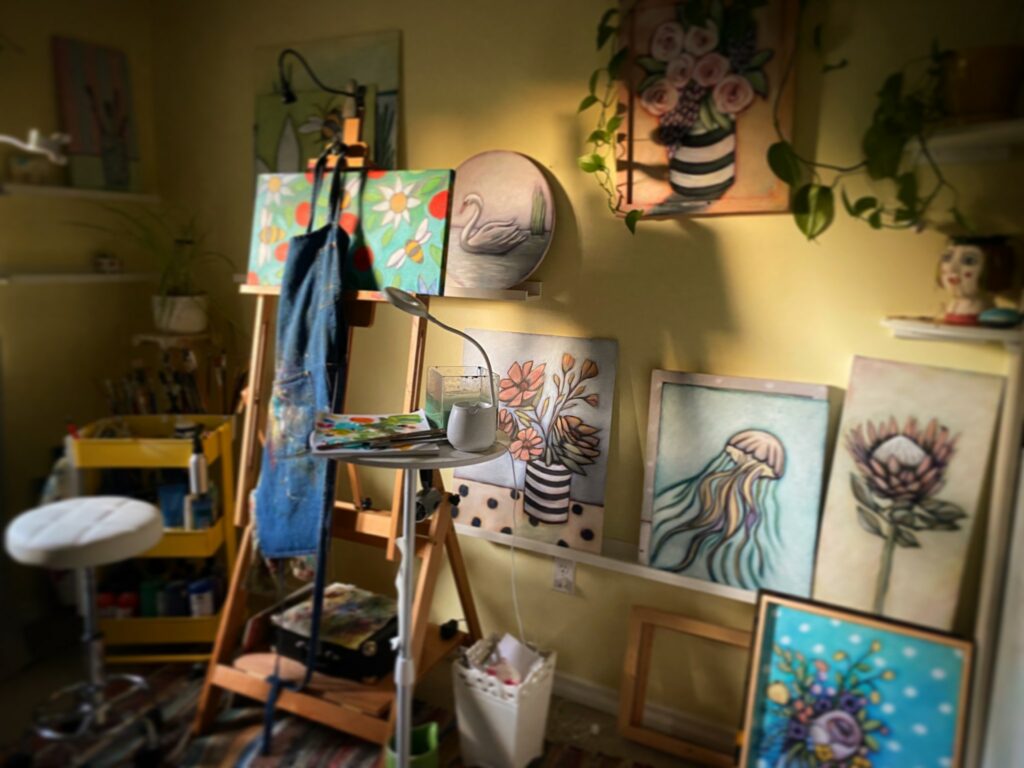Healing through Art
Our community has recently faced a profound loss with the passing of our respected RCMP officer, Rick O’Brien, a beloved husband. With his wife, Nicole, their blended family has 6 children. Nicole is a cherished community member and small business owner here in Langley, who I have known for many years. To know her is to love her and Rick was her person and they loved each other dearly.

In these moments of sorrow, it’s essential to understand that grief is a collective emotion, not just limited to the immediate family. It’s okay for all of us to feel this loss deeply and to give ourselves the grace to mourn. Today, we stand together not only in our grief but also in the love and memories of a life so meaningfully lived.
Understanding the Grief Cycle
Grief is a deeply personal journey, yet many find comfort in recognizing the emotional stages that countless others have felt during their own losses. Psychiatrist Elisabeth Kübler-Ross outlined a grief cycle that illuminates this journey:
- Denial: An initial shock or disbelief, cushioning the sudden impact of the loss.
- Anger: As the effects of denial fade, pain re-emerges, often expressed as anger—towards others, ourselves, or the situation.
- Bargaining: A stage where there’s hope that the loss can somehow be reversed or postponed.
- Depression: Marked by reflection, sadness, and regret, as the reality of the loss settles in.
- Acceptance: Beginning to accept the loss as a reality and considering ways to move forward.
It’s vital to remember that everyone’s journey through grief is unique. We might find ourselves in any of these stages at different times, with no set timeline for healing. By understanding these stages, we can better support ourselves and each other.
Mindful Mark Making: Healing through Art
As we continue our journey of healing and understanding, I’d like to introduce the Emotion Doodles session. It’s a quick, meaningful way to connect with our feelings during a lunch break or any moment of pause. Using just a pen and paper or a drawing app on your phone, this activity helps us acknowledge and visualize our emotions. Remember, it’s about the process and personal reflection, not the end artwork. Maybe even consider doing this occasionally as a personal check-in with your emotions. Sending love and strength to all.
Emotion Doodles: A Lunch Hour Healing Arts Session
Materials Needed:
- A sheet of paper and pen OR a drawing app on your phone or tablet
Instructions: ( Reading instructions out loud or whispering them to oneself for a healing art session can amplify a sense of intention and immersion, guiding our focus and setting a calming tone that enhances the therapeutic efficacy of the activity.)
- Setting the Environment: Even if you’re in your workspace, try to create a calm atmosphere. Maybe put on some soft background music if available and take a deep breath to center yourself.
- Brainstorming Emotions: On a corner of your paper or a section in your app, write down some emotions you’ve been feeling lately—both related to the loss and others that might be present.
- Turning Emotions into Doodles: For each emotion you’ve listed, create a doodle or symbol that represents it for you. It can be as simple or intricate as you’d like. It’s not about the artistic merit; it’s about expressing and recognizing that emotion.
- Mindful Drawing: As you create each doodle, focus on the emotion it represents. How does it feel in your body? Is it heavy or light? Sharp or soft? Let your pen or stylus move freely without overthinking.
- Reflection: Once you’ve doodled each emotion, take a moment to observe your creations. Acknowledge the range of feelings you’re experiencing and remind yourself that it’s okay to feel them all.
- Sharing (Optional): If you’re in a group or community setting and feel comfortable, consider discussing your doodles or even showing them. Sometimes, sharing can lead to mutual understanding and support. (If you would like to share you piece with the community you can email membership @ zealousart .com and I can publish it on this page as a tribute to Rick. )
- Closing: End the session by taking a moment to appreciate the process of self-expression and acknowledgement. Maybe write down a positive affirmation or a word of hope on your sheet to carry with you through the day.
This activity allows us to express and acknowledge our emotions, providing a way to process and heal.
As we continue this journey of healing, let us come together to support one another, offering a comforting hand or a listening ear. Let’s also give ourselves time and space to grieve, remembering that it’s about the sentiments and memories we hold dear. Sending love and strength to our community in these trying times.
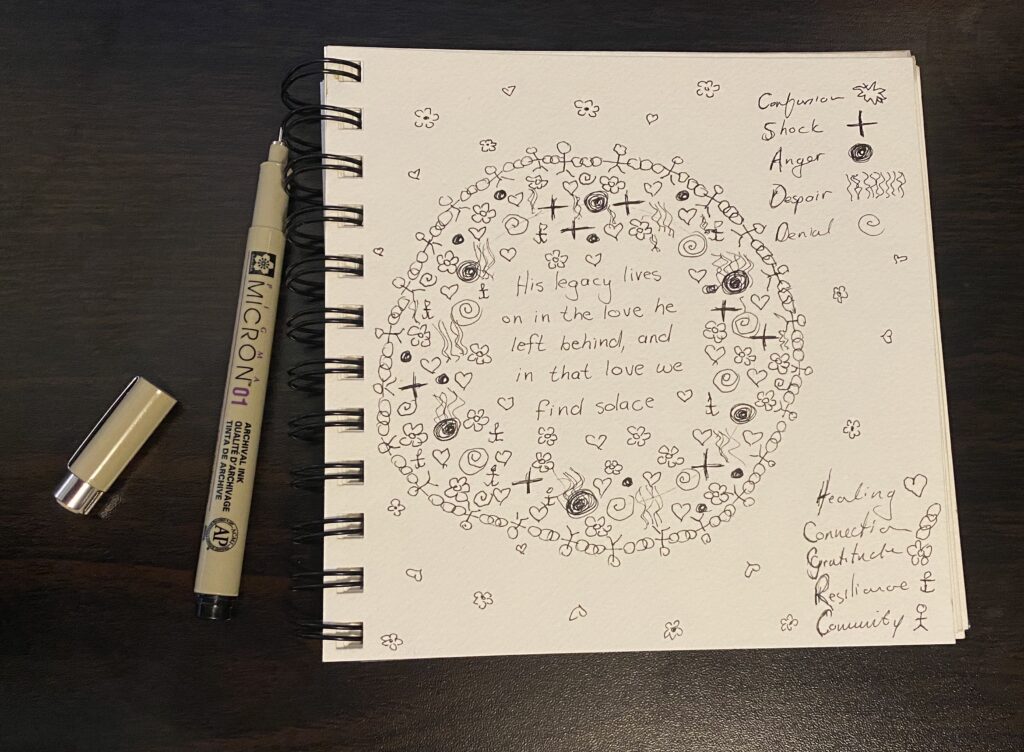
When we grief the heavy clouds of sorrow can rob us from the words we need to express our emotions. Just doodle, just make marks and work through what ever you are feeling.
Always Love
~freda
Grief is a complex and multifaceted experience that can elicit a wide range of emotions. Here are 10 emotions someone might go through during grief:
- Denial: A feeling of disbelief or numbness, as if the loss didn’t happen.
- Anger: Intense frustration or resentment, sometimes directed at oneself, others, the situation, or even the deceased.
- Bargaining: Feelings of guilt or thinking about “what ifs” and “if onlys,” wishing to reverse or negotiate away the pain of the loss.
- Despair/Depression: An overwhelming sense of sadness, hopelessness, or loneliness.
- Acceptance: A sense of understanding or coming to terms with the reality of the loss.
- Shock: An initial stunned or dazed feeling, often immediately following the loss.
- Guilt: Regret over things done or not done, words spoken or left unsaid, or feeling responsible for the loss in some way.
- Yearning/Loneliness: A deep longing or missing the presence of the deceased, feeling an emptiness where they once were.
- Confusion: Struggling to understand or make sense of the loss, feeling lost or overwhelmed by the emotions.
- Relief: Particularly in cases where there was prior suffering or prolonged illness, one might feel relief that the loved one is no longer in pain or that a challenging situation has ended.
It’s important to note that these emotions can arise in any order, can coexist, and might recur over time. Everyone’s grief journey is unique, and there’s no “right” or “wrong” way to grieve.
If you are struggling to come up with positive affirmations / words to carry thorough the day, here are some examples.
- Resilience: A reminder of the inner strength that allows us to recover and move forward.
- Healing: A hopeful affirmation that, with time, the pain will lessen, and healing will take place.
- Connection: A nod to the ties that bind us to others and the shared experiences that unite us.
- Gratitude: A word that encourages a focus on the positive aspects and memories, even in the face of loss.
- “I am not alone.” An affirmation to remind oneself of the community, family, and friends who offer support and companionship during challenging times.
Affirmations
- “Together, we share our grief and find strength in the bonds that unite us.”
- “Our community is a tapestry of memories and support; in it, I find solace and strength.”
- “In the heart of our community, every loss is felt, and every healing journey is shared.”
- “Bound by memories, love, and compassion, our community stands resilient in the face of sorrow.”
- “Even in moments of loss, our community’s collective embrace carries us towards healing.”
- “In every moment of darkness, I remember the light that was, and find strength in the love that remains.”
- “I am grounded in the memories we shared, and they guide me towards healing each day.”
- “Grief is a testament to love, and though I hurt now, I am grateful for the moments we had.”
- “Every step I take is a step towards healing, even if today’s step is small.”
- “Their legacy lives on in the love they left behind, and in that love, I find solace.”

